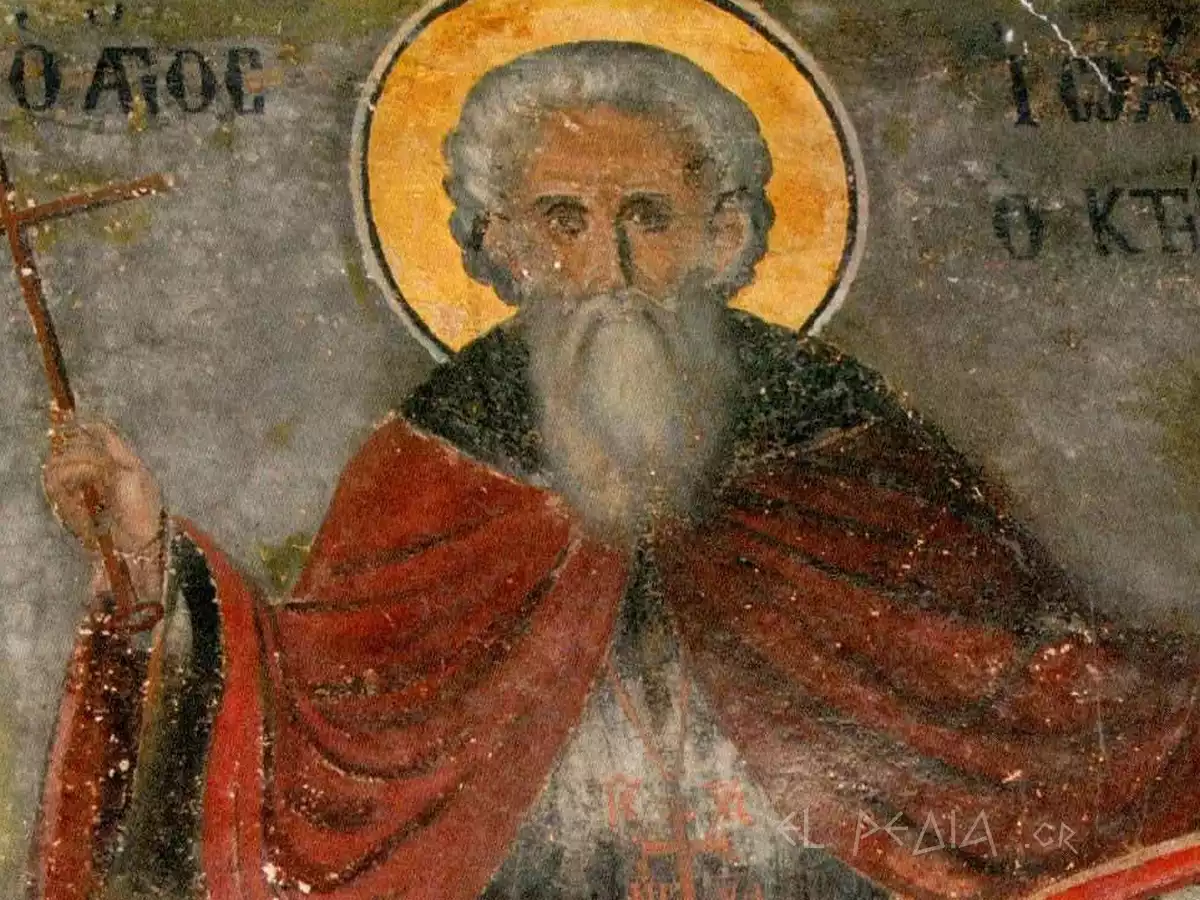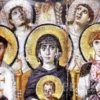Commemoration: May 13
Saint John the Iberian is one of the most significant figures of Athonite monasticism in the 10th century. A scion of a prominent family of Iberia, John Varasvatzes, as he was known in the world, distinguished himself as a curopalates and advisor to the governor of Iberia, David. His decision to abandon worldly life and embrace monasticism marked the beginning of a new era for Mount Athos. In 965, he arrived at Athos, where he formed a close bond with Saint Athanasius the Athonite, founder of the Great Lavra. Their spiritual relationship was so strong that Saint Athanasius appointed him as the steward of the Lavra in his will.
The most important work of Saint John was the founding of the Holy Monastery of Iviron, which was destined to become a significant center of spirituality and culture. The monastery received generous support from both his relative, General John Tornikios, and Emperor Basil II the Bulgar Slayer. Under his guidance, the monastery evolved into a cradle of Iberian and Greek monastic tradition, contributing decisively to the cultural and spiritual osmosis between the two peoples.
Early Life and Spiritual Journey
The life of John the Iberian is characterized by a remarkable transition from worldly power to spiritual quest. Born in the city of Artanoudji in Iberia, John Varasvatzes came from a prominent family and held the honorary title of curopalates, a position that gave him significant influence at the imperial court. His political career as an advisor to the governor of Iberia, David, placed him at the center of the political developments of his time.
His decision to abandon worldly life after his marriage was a turning point in his spiritual journey. His transition from political power to monastic life is marked by a deep internal quest, which led him to wander in various places of asceticism. Through this wandering, he sought spiritual perfection and the authentic monastic experience.
The year 965 was a milestone in his spiritual path, as he arrived at Mount Athos, where he met Saint Athanasius the Athonite. This meeting was decisive for his further course, as a deep spiritual relationship developed between them, characterized by mutual respect and trust. John became a close friend and disciple of Saint Athanasius, a relationship sealed by the latter’s decision to appoint him as the steward of the Great Lavra in his will.
John’s deep spirituality and administrative ability were recognized by Emperor Basil II the Bulgar Slayer, who provided him with the necessary support for the subsequent founding of the Iviron Monastery. The emperor’s favor proved decisive for the establishment of the monastery as a center of spirituality and culture on Mount Athos.
His dedication to spiritual life and his deep faith are reflected in the fact that the Church honors his memory on May 13, along with his son Saint Euthymius and his nephew Saint George, thus recognizing the significant contribution of the entire family to the spiritual tradition of Mount Athos.
The Work of Founding the Iviron Monastery
The founding of the Iviron Monastery by John the Iberian is a milestone in the history of Athonite monasticism and in Byzantine-Iberian relations of the 10th century. The choice of location and the architectural conception of the monastic complex reflect John’s deep understanding of the needs of the monastic community and the prospect of spiritual development.
The foundation of the monastery was carried out with the blessing of Saint Athanasius the Athonite, a fact that gave special prestige to the endeavor. In the context of the construction, the contribution of General John Tornikios, a relative of the founder, was decisive, as he offered generous donations for the erection and equipment of the monastery. The support of Emperor Basil II the Bulgar Slayer was also crucial, as it ensured the uninterrupted development of the monastery and its establishment as a spiritual center.
John envisioned the Iviron Monastery as a place of meeting and dialogue between the Greek and Iberian spiritual traditions, creating a unique core of cultural osmosis and theological reflection. The architectural layout of the monastic complex, which includes the catholicon, the monks’ cells, and auxiliary spaces, was designed with the aim of serving both the functional needs and the spiritual cultivation of the monastic community.
Today, the figure of Saint John the Iberian is depicted in the frescoes of the exonarthex of the Catholicon of the Monastery, which were created in 1888, perpetuating the memory of the founder and his spiritual vision. His presence in the iconographic program of the church underscores the timeless significance of his contribution to the development of monastic life and the cultivation of spiritual values on Mount Athos.

Iconographic analysis of the fresco
This detail from the fresco of Saint John of Ivera is an excellent example of 19th-century Athonite art. The expression and detail of the Saint’s face speak to the kind of skilled rendering one might expect in a work of art from this period. The Saint’s long, white beard is the traditional way of depicting holy fathers in Athonite art. When you see the white-breached beard, you know you’re looking at a depiction of a holy father.
The golden halo, created with remarkable technical proficiency, encloses the Saint’s head, forming a bold contrast with the not-quite-opaque gray backdrop. The choice of color for the barely-there bottom of the red cloak makes a symbolic reference to the Saint’s holiness and martyrdom. The piercing yet serene gaze of the figure somehow captures the essence of the awkwardly close-to-spiritual experience of some watching this artwork.
The fresco’s style melds traditional Byzantine hagiography with the 19th century’s newer fresco skills. While the rendering of the facial features tends towards naturalism, one still sees the priestly modesty customary in the Byzantine tradition of portraits; indeed, the very calmness of the figure might hint that it is an early work by Godfrey. Irrespective of whether these are his skills or those of the frescographer, it is clear that the act of fresco painting, with its conceptual parallels to mosaics, still clung quite closely to the traditional portraiture of hagiography in both the East and the West.
The background inscription, only partially visible in the detail, adheres to the standard practice of hagiographic art in identifying the accommodated countenance. Indeed, the whole assembly of the detail conveys a notion of spiritual wakefulness and an aura of inner tranquility, two states of being one would expect from Saint John of Ivera, the figure credited with founding the monastic community of the Iverskiy Monastery in the seventeenth century.
Saint John the Iberian and His Spiritual Legacy
The personality of John the Iberian is an example of spiritual leadership and foresight in the history of Athonite monasticism. His transition from worldly power to monastic life marked a new era in the relations between Byzantine and Iberian culture. His vision for the Iviron Monastery as a center of spirituality and cultural synthesis was realized in a way that transcended the boundaries of his time.
His contribution to the development of the monastic tradition of Mount Athos was multifaceted. Beyond the founding of the Iviron Monastery, his spiritual guidance and administrative ability created a model of monastic organization that deeply influenced the evolution of Athonite monasticism. His memory, honored along with his son Saint Euthymius and his nephew Saint George, reflects the collective contribution of a family to the spiritual life of Mount Athos.
elpedia.gr

